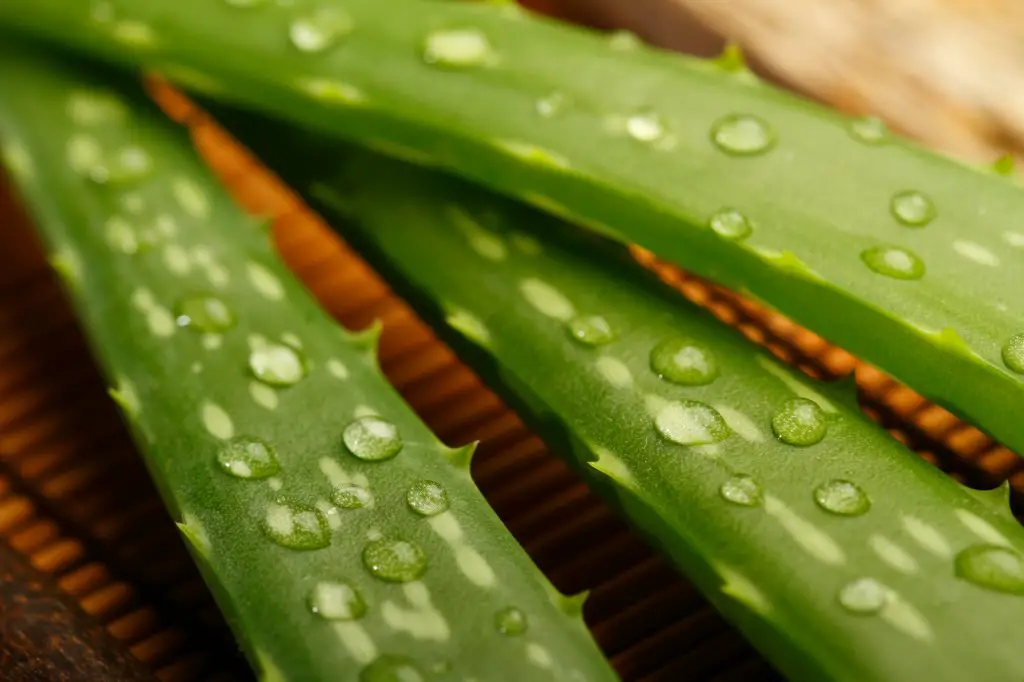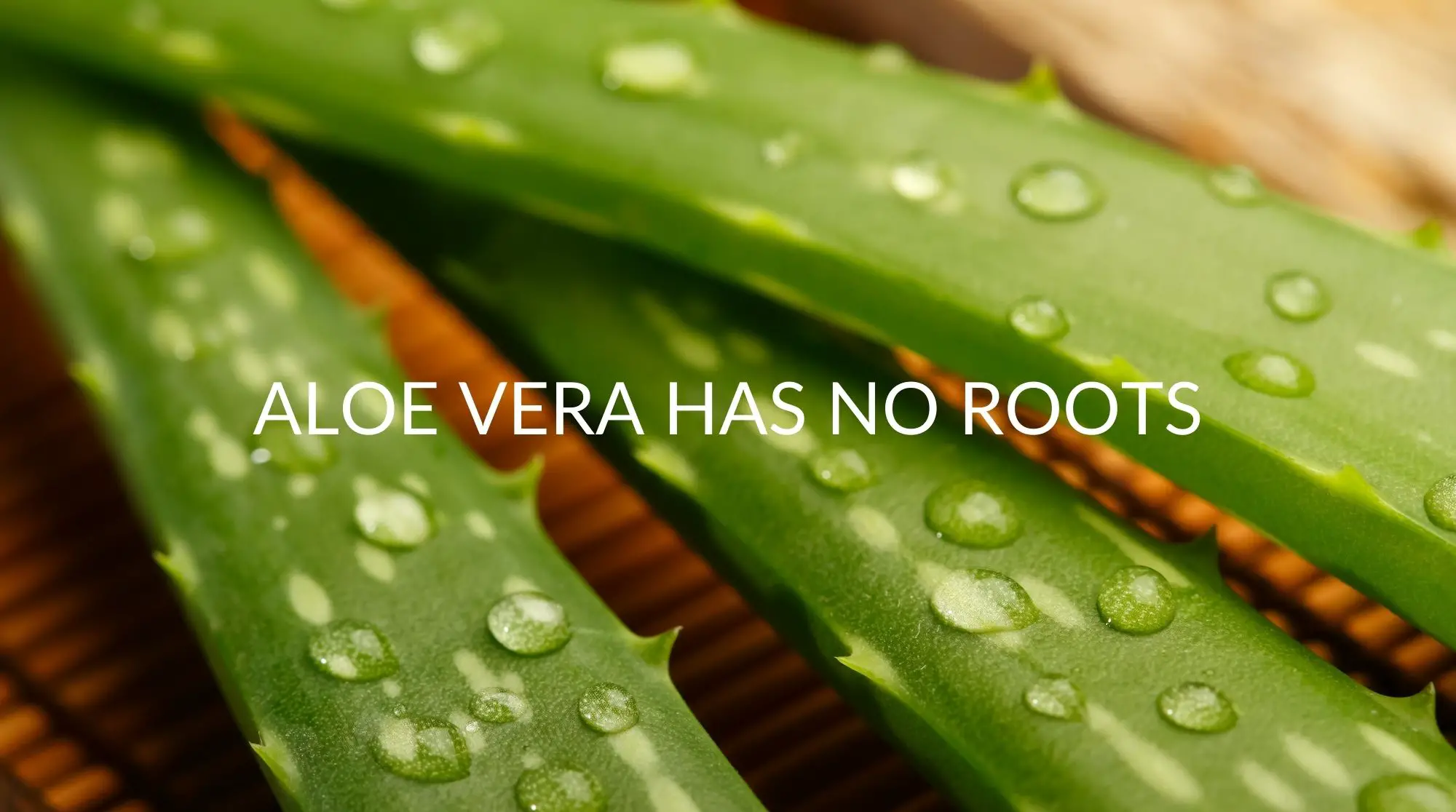The most common reason for Aloe plants losing roots is overwatering and inadequate drainage. Plant your Aloe in soil meant for succulents and cactus, and water only when the top third of the soil is dry. Other reasons for Aloe losing roots could be low light, extreme cold, or root damage.
If your Aloe has no roots, most likely it is sitting in soil that is too wet, causing the roots to rot and die away.
Aloe is succulent, which means it thrives in a dry, arid environment and does not require very frequent watering.
Read on for information on how to care for your Aloe, so its roots stay healthy and your plant flourishes.
What Causes an Aloe to Lose Roots?
Overwatering
It may be tempting to water your Aloe the same way you water your other houseplants–weekly, maybe, or just wherever you feel like it or have extra water.
Aloe Vera is different from many houseplants, however, in that it is a succulent plant that only requires watering once its soil is very dry. It will not tolerate sitting in very moist soil for a long time–this will cause its roots to rot and fall off.
Aloe has a few rules of thumb for watering. Only water when the top one-third of the soil is dry (you will have to test with your finger and see how deep any dampness goes).
In the spring and summer growing season, water your Aloe twice as much as you do in the fall and winter. For example, most Aloe will need water every 2-3 weeks in the summer. In the winter, it could be as infrequently as every 4-6 weeks. Make sure you test your soil to determine how frequently it needs water.
Inadequate Drainage
An Aloe that is watered correctly may still develop root rot if it doesn’t have adequate drainage. Make sure your Aloe pot has at least one drainage hole in the bottom. A large pot should have more holes spaced apart.
When you water an Aloe, you will want to soak the soil thoroughly so all the roots get watered. Then you will let the additional water drain out of the soil. If your plant is in a pot without drainage, this type of watering will be impossible. Water will accumulate in the bottom of the pot and drown the roots.
If you live in a very humid climate, you may also want to keep your Aloe in a place with good airflow or use a fan to circulate air and aid in drying the soil.

Low Light
Aloe requires bright light for large portions of the day (though not direct sun, generally). If your plant is growing in low light, this may be the cause of your lack of roots.
Move your plant to a bright south- or west-facing window and see if roots start to grow. If you don’t have a bright window, Aloe often does well with artificial light such as a grow light or full-spectrum indoor light.
You can move your Aloe outdoors in the warm months, but make sure it doesn’t stay outside once the temperature drops below around 55 degrees Fahrenheit.
Inadequate Soil
Aloe does not grow well in regular potting soil. Potting soil contains a lot of organic matter, such as leaves, bark, and roots, which are good for giving your plant nutrients but will not let much water drain off the soil.
Succulent or cactus soil contains some organic matter but also includes a large amount of inorganic matter such as pumice or perlite. These materials will help aerate the soil and allow adequate drainage.
It is usually a good idea to use fresh soil when repotting plants to increase the amount of nutrients your plant receives.
Root Rot
Roots that sit in damp soil over a period of time will develop root rot. Root rot makes the roots appear black, brown, and slimy. Sometimes you will notice a foul odor.
If you see root rot, carefully trim the affected roots with clean scissors or shears. It is a good idea to repot your plant in fresh soil and discard old soil.
Root Damage
While root rot is a more common reason for Aloe losing its roots, root damage may also be the culprit. Aloe roots are fragile, and if they are disturbed, they will take a long time to regrow. Be careful with your Aloe plant, so the roots aren’t torn or disturbed.
Temperature
Aloe thrives in temperatures between 55°F and 80°F (13°C-27°C). While it shouldn’t be difficult to maintain this temperature range in most homes, make sure you keep track of temperature changes if your plant is outdoors.
Keep in mind that a plant near an air conditioner or heater may experience damaging extreme temperatures.
The roots of Aloe grown in small pots may be especially susceptible to frost if grown outdoors in cold climates.
Can Aloe Vera Survive Without Roots?
An Aloe plant that doesn’t grow new roots will eventually die because it requires roots to get adequate water and nutrients.
That being said, an Aloe with very small or no roots can live a very long time (largely because they retain water and don’t require a lot in terms of water and nutrients).
Even if an Aloe plant or cutting has no roots, if you get it into good growing conditions, it will regrow new roots and thrive.
How To Save An Aloe Plant That Has No Roots
If you had a healthy Aloe plant, but now you notice that it no longer has roots under the soil, you can still save it. Or you may have noticed that your Aloe seems to be working its way out of the soil and maybe resting on top but not anchored by anything.
Don’t give up on it! This Aloe can be saved; it just needs to be placed in conditions where it can regrow its roots. Here’s what to do:
Prepare your Plant
If you have an aloe plant with missing roots, make sure you trim off any dead roots or leaves that are at the base of your plant.
If you trim away a significant part of the plant, you will want to let it sit in a warm place, in bright light, for a week or more, so the wound can heal over. This will prepare the plant to re-root.
Prepare a Pot
Aloe plants require significant drainage, so any pot you choose must have at least one drainage hole. Cover the drainage holes with mesh if you are concerned about losing soil.
A ceramic pot may be the best choice for Aloe, as ceramic allows water to evaporate better than plastic, metal, or glazed pots.
Make sure your plant is not sitting in water. If you have a dish under your plant, make sure it is emptied after you water your Aloe.
You can also grow an Aloe in a Bonsai pot, which has feet on it that allow for more airflow and drainage.
Use Succulent or Cactus Soil
Many gardeners like to mix their own succulent soil, though you can probably also get by with any succulent or cactus soil found at garden centers or online.
If you want to make your own, you can combine potting soil (organic material) with some type of inorganic material like rock or sand. Many gardeners like to add perlite and/or pumice. Making your own soil allows you to adjust to your home environment.
If you live in a very humid climate, you may want to increase the percentage of inorganic material to increase aeration and drainage. Likewise, in a very dry climate (or if you don’t water your plants frequently), you may want to use a larger percentage of potting soil.
You can start with a mixture of roughly two parts potting soil, one part perlite, and one part pumice.
Plant your Aloe
Fill the pot with soil up to around an inch from the top. Place your plant or cutting in the soil, making sure you get any root buds under the layer of soil. Cover your plant with more soil, pressing down gently as needed to secure your plant.
Water Your Plant After One Week
You don’t need to water your plant right away. Remember, it has been sitting in the air for a long time, so it will need to adjust to being in soil.
After around a week, gently soak the soil, being sure not to disturb the dirt around your plant. If your plant is indoors, you may be able to do this in the kitchen sink.
All excess water should flow out of the pot. After this time, soak your plant every time you feel that the top third of the soil is dry. You can soak the pot more than once if you feel the soil is not soaked or if air bubbles are still rising to the surface. It is imperative that you let your plant dry thoroughly after soaking.
Do not let your Aloe sit in water.
Check for Adequate Temperature and Light
Aloe should be grown in bright, indirect light but not in direct sunlight. Make sure your plant is in the appropriate temperature range (55°F to 80°F), even overnight. Keep in mind that having a window open, or putting your plant near an air conditioner or heating vent, will affect the temperature.
How To Plant Aloe Vera Without Roots
You can also propagate Aloe Vera from cuttings of the leaves or stem, even if the cuttings don’t have roots. The process is similar to replanting an Aloe whose roots have died.
These instructions will also work if you have separate Aloe “pups” from the main plant, whether or not the pups have roots.
Take a Cutting of an Aloe Leaf
With a sharp and clean knife, cut a healthy Aloe leaf at an angle, or try to cut part of the stem. You may want to make more than one cutting, if possible, in case some of the cuttings don’t root.
Let your cutting rest on a paper towel in indirect light, in a warm place, for around a week. After a week, check to see if the wounds have healed over.
Prepare Your Pot
See above for information regarding the best pots for Aloe plants.
You can root several small cuttings in one pot, as long as they are spaced enough that each one gets enough light, and they can grow individual root systems. If you want to do this, make sure you choose a pot large enough to accommodate all your cuttings.
Plant your Cutting
Gently place the cutting into the soil, and then add additional soil on top. Make sure you place your pot in bright light, away from heat or cold (such as open windows or vents).
If it is warm outdoors, you can place your plant outside.
Don’t water your cutting for around a week after planting, so it can adapt to the soil. After this time, make sure you soak the soil thoroughly, but make sure it is drying adequately. It is crucial that cuttings not sit in damp soil, as they will not develop healthy roots.
Be Patient!
Aloe is not a fast-growing plant, but if you make sure it is in bright light and isn’t overwatered, it can be very hearty.
FAQ
Can I Plant Aloe Vera Without Roots?
Yes! It may be alarming to see a plant without roots to support it, but a rootless Aloe can develop new roots if it is well cared for. You can also grow a brand new Aloe from a cutting of a leaf or stem–it will sprout its own roots after time.
Recap
With the right skills, conditions, and equipment, Aloe is often a very easy plant to propagate. The most important thing to remember is not to overwater your plant. Remember, Aloe thrives in a desert-like climate, so resist the temptation to water it like other houseplants.
As your Aloe gets healthy, you may discover you have any number of “baby” Aloe plants that can be separated out and grown as separate plants.








